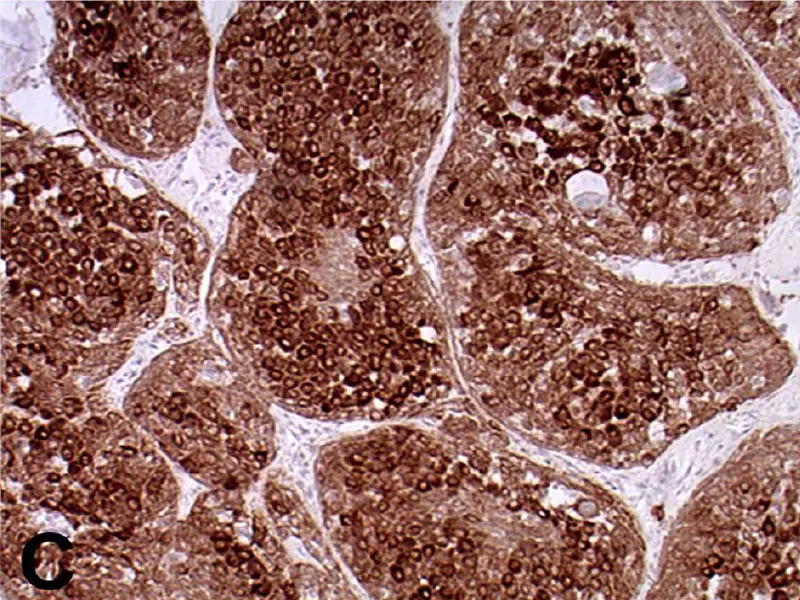Subclinical Muscle Injuries in Dogs Infected with Leishmania (Leishmania) infantum chagasi
DOI:
https://doi.org/10.24070/bjvp.1983-0246.005020Keywords:
histopathology, immunohistochemistry, muscle, visceral leishmaniasisAbstract
Although canine visceral leishmaniasis (CVL) has been extensively studied, muscular damage due to Leishmania (Leishmania) infantum chagasi infection remains to be fully established. The aim of this study was to describe the electromyographic and histological changes, as well as search for the presence of amastigote forms of Leishmania spp, CD3+ T-lymphocytes, macrophages and IgG in skeletal muscles of dogs with visceral leishmaniasis (VL). Four muscles (triceps brachial, extensor carpi radialis, biceps femoris and gastrocnemius) from a total of 17 naturally infected and six healthy dogs were used in this study. Electromyographic alterations such as fibrillation potentials, positive sharp waves and complex repetitive discharges were observed in, at least, three muscles from all infected dogs. Myocyte necrosis and degeneration were the most frequent muscular injury seen, followed by inflammatory reaction, fibrosis and variation in muscle fibers size. Immunohistochemistry in muscle samples revealed amastigote forms in 4/17 (23.53%), IgG in 12/17 (70.58%), CD3+ T-lymphocytes in 16/17 (94.12%) and macrophages in 17/17 (100%) dogs. Statistically positive correlation was observed between: inflammatory infiltrate (p=0.0305) and CD3+ immunoreaction (p=0.0307) in relation to the number of amastigote forms; inflammatory infiltrate (p=0.0101) and macrophage immunoreaction (p=0.0127) in relation to the amount of CD3+; and inflammatory infiltrate (p=0.0044) and degeneration / necrosis (p<0.0001) in relation to the presence of macrophages. Our results suggest that different mechanisms contribute to the development of myocytotoxicity, including celular and humoral immune responses and direct muscular injury by the parasite. Nevertheless, the catabolic nature of the disease can probably interact with other factors, but cannot be incriminated as the only responsible for myositis.


